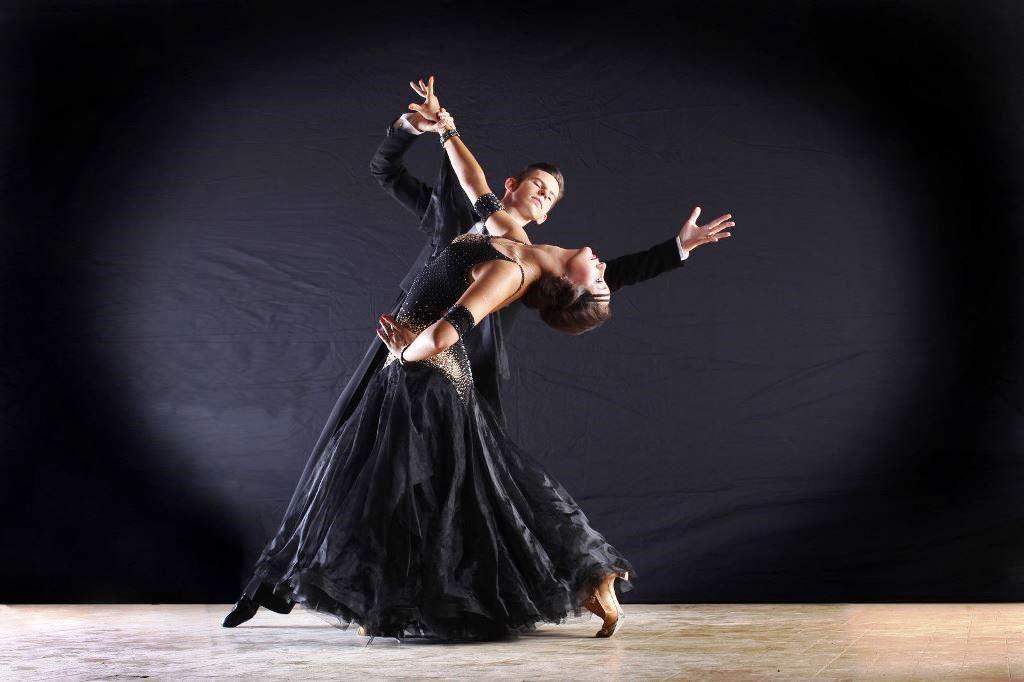
1. Finding a Partner: How to find a reliable and compatible partner to dance with.
Finding a Partner: How to Find a Reliable and Compatible Partner to Dance With
Finding a reliable and compatible partner to dance with is one of the top challenges faced by ballroom dancers in Britain. It can be difficult to find someone who is committed to the same level of training, has the same enthusiasm and dedication, and is a good match for your dancing style.
1. Ask Around
The first step to finding a reliable and compatible partner is to ask around. Ask your friends and family if they know anyone who is interested in ballroom dancing. You could also join local ballroom dancing clubs and ask members if they know of anyone who is looking for a partner.
2. Look Online
You can also use the internet to find potential dancing partners. There are many websites that list ballroom dancers who are looking for partners, such as the UK Ballroom website. You can also search for ballroom dancing groups on social media platforms such as Facebook and Twitter.
3. Attend Competitions
If you are serious about finding a reliable and compatible partner, attending ballroom dancing competitions and events is a great way to meet potential partners. You can observe how they dance and get to know them better before deciding if they are a good match for you.
4. Take Lessons
Taking ballroom dancing lessons can also be a great way to find a reliable and compatible partner. You can meet other dancers who have the same level of experience and commitment as you. Many ballroom dancing schools have classes specifically for couples, so this is a great way to meet potential partners in a safe and supervised environment.
2. Finding a Studio: How to locate a suitable and affordable studio to practice in.
Finding a Studio: How to Locate a Suitable and Affordable Studio to Practice In
Finding a suitable and affordable studio to practice ballroom dancing in Britain can be challenging. Here are some tips for locating a studio that meets your needs:
Research the Local Area
Start by researching the local area to find out what studios are available. Look online and ask friends or family in the area for recommendations.
Check for Reviews
Once you have identified a few potential studios, look for reviews online to get an idea of the quality of the studio’s facilities and services.
Visit the Studio
Once you have narrowed down your choices, visit the studios to get a feel for the atmosphere and to assess the quality of the teaching.
Compare Prices
Finally, compare the prices of the different studios to find the most affordable option. Be sure to factor in any additional costs such as membership fees or equipment hire.
3. Cost of Lessons: How to save money while still getting quality instruction.
Cost of Lessons: How to save money while still getting quality instruction
When it comes to ballroom dancing lessons, costs can quickly add up. However, there are ways to save money while still ensuring that you are getting quality instruction. Here are some tips to help you save money on ballroom dancing lessons:
1. Look for Discounts
Many dance studios and instructors offer discounts for students or for people who pay for multiple lessons in advance. Be sure to ask your instructor or studio if they offer any discounts.
2. Take Group Lessons
Group lessons can be a great way to save money on ballroom dancing lessons. Group lessons are typically cheaper than private lessons, and they also allow you to practice with other dancers.
3. Look for Online Resources
The internet is a great resource for ballroom dancing lessons. There are many websites and videos that offer free or low-cost instruction. These can be a great way to learn the basics of ballroom dancing without spending a lot of money.
4. Attend Events
Attending ballroom dancing events such as competitions, workshops, and showcases can be a great way to save money. Many of these events are free or low-cost, and they can be a great way to learn from experienced dancers and instructors.
5. Take Advantage of Free Classes
Many dance studios and instructors offer free classes or workshops. These can be a great way to try out different styles of ballroom dancing without having to commit to a long-term lesson plan.
By taking advantage of discounts, group lessons, online resources, events, and free classes, you can save money on ballroom dancing lessons while still getting quality instruction.
4. Keeping Up with Dances: How to stay on top of the ever-changing trends in ballroom dancing.
Keeping Up with Dances: How to Stay on Top of the Ever-Changing Trends in Ballroom Dancing
Ballroom dancing is a constantly evolving art form, and keeping up with the latest trends can be a challenge. Here are some tips to help you stay on top of the ever-changing trends in ballroom dancing:
1. Follow Social Media Accounts
Social media is a great way to stay informed about the latest ballroom dancing trends. Follow accounts dedicated to ballroom dancing, and look out for any announcements about upcoming events or changes in the scene.
2. Attend Events and Competitions
Events and competitions are a great way to stay abreast of the latest trends in ballroom dancing. Attend as many as you can, and take the opportunity to watch and learn from the best dancers in the country.
3. Take Classes
Taking classes is a great way to stay up to date with the latest trends. Look for classes that focus on the latest trends in ballroom dancing and take advantage of the opportunity to learn from experienced instructors.
4. Stay Informed
Stay informed about the latest news and developments in the ballroom dancing scene. Read magazines, newspapers, and blogs dedicated to ballroom dancing and stay up to date with the latest trends.
5. Overcoming Fear: How to conquer stage fright and self-doubt.
Overcoming Fear: How to Conquer Stage Fright and Self-Doubt
Stage fright and self-doubt can be one of the biggest challenges for ballroom dancers in Britain. But with the right strategies, you can learn to manage your fear and become a confident dancer.
1. Recognise Your Fear
The first step to overcoming fear is to recognise it. Acknowledge that you are feeling scared or anxious and take a moment to understand why. It can help to write down your thoughts and feelings, so you can better identify the source of your fear.
2. Prepare for Performance
Once you’ve identified your fear, you can start preparing for your performance. This means getting familiar with the dance steps and music, and practicing with a partner. It’s also important to get plenty of rest and eat well in the days leading up to your performance.
3. Visualise Success
Visualisation is a powerful technique for overcoming fear. Take a few moments to imagine yourself performing well and feeling confident. Visualise yourself dancing with grace and poise, and feeling proud of your performance.
4. Focus on the Moment
When you’re on stage, it can be easy to get overwhelmed by fear. Instead, focus on the moment and the task at hand. Focus on the music and the movements, and don’t think too much about the outcome or the audience.
5. Celebrate Your Success
Finally, don’t forget to celebrate your successes. After each performance, take a few moments to reflect on what went well and what you can improve on. Acknowledge your accomplishments and take pride in your progress.
6. Knowing the Rules: How to learn and understand the rules of competitive ballroom dancing.
Knowing the Rules: How to Learn and Understand the Rules of Competitive Ballroom Dancing
1. Learn the Different Styles of Ballroom Dancing
Competitive ballroom dancing in Britain is usually divided into two categories: International Standard and International Latin. International Standard includes dances such as the Waltz, Tango, Foxtrot, Viennese Waltz, and Quickstep. International Latin includes dances such as the Samba, Cha-Cha, Rumba, Paso Doble, and Jive. It is important to learn the different steps and techniques for each type of dance.
2. Understand the Scoring System
Each dance is judged on a scale from one to ten. Judges look for technique, musicality, and expression. The highest possible score is 40, and the average score is usually between 28 and 32.
3. Familiarize Yourself with the Rules of Competition
Competitions are usually divided into different levels and categories. Each level requires different steps and techniques. It is important to understand the rules of the competition before competing.
4. Attend Competitions
Attending competitions is a great way to learn about the rules and regulations of competitive ballroom dancing. Watching experienced dancers compete can be a great way to learn the steps and techniques.
5. Take Lessons
Taking lessons from a qualified instructor is the best way to learn the rules and regulations of competitive ballroom dancing. An experienced instructor can help you understand the scoring system and the different styles of ballroom dancing.
6. Practice, Practice, Practice!
The best way to become a successful competitive ballroom dancer is to practice. Practice the steps and techniques until you have mastered them. With enough practice, you will be able to compete with the best of them.
7. Staying in Shape: How to stay fit and maintain proper technique.
Staying in Shape: How to Stay Fit and Maintain Proper Technique
Ballroom dancing is a physical activity that requires strength, endurance, and flexibility. To stay in top form, dancers must make sure to keep up with their fitness routine. Here are some tips for staying in shape and maintaining proper dancing technique:
Strength Training
Strength training exercises are essential for ballroom dancers. They help to develop the muscles needed for the various steps and turns. Dancers should focus on exercises that target the legs, hips, and core. Squats, lunges, and planks are all great exercises to help build strength.
Cardio
Cardio is important for ballroom dancers as it helps to improve their endurance and stamina. Running, cycling, and swimming are all good forms of cardio that can help dancers stay in shape.
Stretching
Stretching is an important part of any dancer’s routine. It helps to keep the muscles flexible and prevents injury. Dancers should focus on stretching the major muscle groups, such as the legs, hips, and back.
Proper Technique
In addition to staying in shape, it is important for dancers to maintain proper technique. This means focusing on the correct posture, footwork, and arm movements. Taking classes with a qualified instructor is the best way to learn the proper technique.
Practice
Practice makes perfect! Dedicating time to practice is essential for any dancer. It helps to improve technique and build confidence. Practicing regularly helps to ensure that the steps and turns are executed correctly.
Rest
Rest is just as important as exercise for ballroom dancers. Taking regular breaks will help to prevent injury and ensure that the body is well-rested for the next practice session.
Nutrition
Proper nutrition is key for any dancer. Eating a balanced diet that is rich in protein, carbohydrates, and healthy fats is important for staying in shape and keeping energy levels up.
8. Time Management: How to balance practice and performance with other commitments.
Time Management: How to Balance Practice and Performance with Other Commitments
Balancing practice and performance with other commitments is one of the biggest challenges faced by ballroom dancers in Britain. With work, family and other activities, it can be hard to find the time to dedicate to dancing. Here are some tips to help you manage your time and make sure you’re getting the most out of your dancing.
Set Realistic Goals
It’s important to set realistic goals for yourself when it comes to balancing your commitments. Don’t try to do too much at once, and make sure to give yourself breaks. Set aside a specific amount of time each day for practice and performance, and try to stick to it.
Plan Ahead
Planning ahead is key when it comes to managing your time. Make a schedule and plan out what you need to do each day. This will help you to stay on track and make sure you’re getting everything done.
Prioritise
When you’re juggling multiple commitments, it’s important to prioritise. Make sure that the most important tasks are done first, and don’t be afraid to say no to things that aren’t essential.
Delegate
If you’re struggling to manage your time, it’s a good idea to delegate some of your tasks. Ask for help from family and friends, or hire someone to help you with your practice and performance.
Take Breaks
It’s important to take breaks when you’re managing your time. Take a few minutes each day to relax and unwind, and make sure to get enough sleep.
Stay Organised
Staying organised is essential when it comes to managing your time. Make sure to keep your practice and performance space tidy, and keep track of your commitments.
Be Flexible
Finally, it’s important to be flexible when it comes to managing your time. Don’t be afraid to adjust your schedule if something unexpected comes up.
Balancing practice and performance with other commitments can be a challenge, but with these tips, you’ll be able to manage your time and make sure you’re getting the most out of your dancing.
9. Keeping Motivated: How to stay inspired and passionate about ballroom dancing.
Keeping Motivated: How to Stay Inspired and Passionate about Ballroom Dancing
Ballroom dancing can be a challenging and demanding activity, and it is important to stay motivated and passionate about it. Here are some tips to help you stay inspired and keep the love of ballroom alive:
1. Remember why you started
Take a moment to reflect on why you started ballroom dancing in the first place. Was it to make new friends? To learn a new skill? To perform in competitions? Remembering your original motivation can help you stay focused and inspired.
2. Set goals
Setting goals can help you stay focused and motivated. Make sure your goals are achievable, and break them down into smaller, more manageable steps. Celebrate your successes and use any setbacks as learning opportunities.
3. Take a break
Burnout is a real risk for ballroom dancers, so it is important to take regular breaks. Taking a break can help you recharge and refocus, and can also help you avoid injury.
4. Find a mentor
Finding an experienced and knowledgeable mentor can be a great way to stay motivated and inspired. A mentor can provide guidance and support, as well as help you stay focused and on track.
5. Find a dance partner
Having a dance partner can help keep you motivated and inspired. Working with someone who shares your passion and enthusiasm can be incredibly rewarding, and can help you stay focused and on track.
6. Try something new
If you find yourself getting bored or uninspired, try something new. Learning a new dance style or attending a different class can help keep things interesting and help you stay motivated.
7. Watch competitions and performances
Watching competitions and performances can help you stay motivated and inspired. Seeing other dancers perform can give you a sense of what is possible, and help you stay focused on your goals.
8. Take part in competitions
Competing in ballroom dancing competitions can be a great way to stay motivated and inspired. It can also help you push yourself and improve your skills.
9. Listen to music
Listening to music can be a great way to stay motivated and inspired. Put together a playlist of your favourite ballroom music to listen to when you need a boost.
10. Finding Opportunities: How to locate and take advantage of performance and competition opportunities.
Finding Opportunities: How to Locate and Take Advantage of Performance and Competition Opportunities
1. Keep an Eye Out for Events
One of the best ways to take advantage of performance and competition opportunities is to be aware of when and where they are happening. You can find out about events through local dance studios, dance organizations, and other dancers. Most cities will have a few ballroom dance events throughout the year, so make sure to check for upcoming events and plan to attend.
2. Join a Dance Organization
Joining a dance organization is a great way to stay informed about upcoming events and competitions. Organizations such as the British Dance Council or the National Association of Ballroom Dance Professionals will keep you up to date with any new opportunities.
3. Attend Competitions
Competitions are a great way to gain experience and practice your skills. Many competitions offer a variety of levels, so you can choose the one that best suits your skill level. Participating in competitions will also help you to meet other dancers and build connections.
4. Take Part in Performances
Performances are a great way to show off your skills and get noticed. Many dance studios and organizations host performances throughout the year, so make sure to keep an eye out for any upcoming performances. You can also look for opportunities to perform at local events such as weddings, parties, or charity events.
5. Take Classes
Taking classes is a great way to refine your skills and stay up to date with the latest trends. Many dance studios offer classes for all levels, so you can find one that is suitable for your skill level. Taking classes will also help you to stay motivated and make connections with other dancers.
6. Network
Networking is an important part of finding performance and competition opportunities. Make sure to attend social events and meet other dancers. You never know when a connection you make could lead to a performance or competition opportunity.
7. Utilize Social Media
Social media is a great way to stay informed about upcoming events and competitions. Many dance organizations and studios have social media accounts that post updates about upcoming performances and competitions. Make sure to follow them and stay up to date.
8. Ask Around
Don’t be afraid to ask other dancers and dance organizations about upcoming events and competitions. You never know who might know about an opportunity that you didn’t know about.
9. Look for Scholarships
Many dance organizations and studios offer scholarships for dancers. Scholarships can be a great way to get involved in competitions and performances without having to pay for them.
10. Don’t Give Up
Finding performance and competition opportunities can be difficult, but don’t give up. Keep looking for opportunities and don’t be afraid to ask for help. With enough effort, you’ll eventually find the right opportunity for you.




